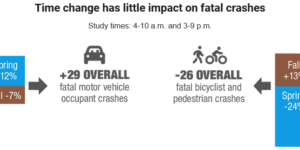
Two-Minute Q&A Chat Series
Note: This is the sixth in a series of articles on insurance transformation by Majesco and PwC. Today’s article is a continuation from the 3/30/2022 featured Absence Management podcast between Denise Garth, Chief Strategy Officer at Majesco, and Rima Safari and Mark Rosenthal from PwC’s Insurance Transformation practice.
Denise Garth: The podcast was so informative, that we want to expand on a few topics. The first is, how can a carrier better position themselves in the absence management space?
Mark: Absence management is a complex space with an evolving regulatory environment and vast changes in corporate leave. Now more than ever, most employees are defining the benefits that they want from employers. The pandemic, to a degree, has expedited changes and employee/employer needs in this space. The pandemic has primarily impacted this space in 2 main ways: First, by adding additional complexity in the absence management ecosystem; and second, by further defining employee/employer benefits needs. Along with these main points, we have all heard of the “great resignation,” as employees’ needs are evolving, which in turn are shaping employers’ needs. Now, more than ever, an employee is more likely now to leave their current employer if their needs are not satisfied. For example, the latest PwC Pulse Survey found that 65% of employees are looking for a new job[i]. As a result, needs are more complex and plan sponsors and distribution partners are looking for solutions. For a carrier to better position themselves in this space, they should fully embrace absence management and look at absence management from a holistic standpoint. The greater the ability of a carrier to distill customer needs and create solutions that are both packaged and flexible in the absence management space, their potential for success is greater, than a carrier partially engaged.
Denise Garth: When you say “holistic”, can you provide more detail? Is it leading with absence management and leveraging other existing products or creating new products to solve for multiple needs? Is this what could give a carrier a competitive edge?
Mark: Yes, that is how a carrier looking to expand their role in this space should be thinking about the future of their program(s). Lead with absence management, but solve it holistically, by addressing multiple needs; whether it is looking at existing products or investing in research and development of new products and determining how to come into the market with a holistic package or packages. An example of this would be if an employee got into an accident, and needs to take leave, needs therapy, and needs special job placement while recovering.
Rima: The ability for a solution to cover all of the aspects of an accident in a simple frictionless way results in lower stress to the end customer, and a great solution in this space. Due to the complexity of absence management, most distribution partners are looking to carriers to solve the issues in this space. Distribution partners often don’t have the time or resources to grow/retain their books, service their accounts, provide counsel to their clients, and navigate the myriad of carriers, regulations, and needs, to provide a holistic solution. If a carrier can come to their distribution channels with a solution comprehensive enough to cover consumer needs, but flexible enough to adapt to the changing environment, then that can be a win-win for everyone. However, all of this is easier said than done. A carrier looking to expand their role in this space should be committed.
Denise Garth: You mentioned the word “commit” or “fully commit” a few times, can you expand on what committing in the absence marketplace means?
Rima: Absence management is not for the faint of heart. As carriers look at their overall current and potential product offerings, they should have alignment across the enterprise in order to invest the time and money needed into making their absence solutions solve the needs of the marketplace. This will involve transformation of processes and systems to help provide consumers with seamless interfaces and customer services, along with the ability to pick bespoke products for their workforce. Trying to solve this issue will not happen overnight, and will take multiple interactions. Like our previous article on the Distribution Management Maturity Curve, solving for this will happen in stages. There may be times where a carrier may plateau, but by understanding that solving for this is more of a journey that requires a detailed plan with finance support, enterprise support, and proper systems support, for the term-long, this can position a carrier in a positive way rather than a “partially committed” carrier unsure how to play in the space.
Denise Garth: I hope we answered your questions on how to start thinking about absence management, and aspects that can potentially differentiate a carrier. Have a question about absence management or want to learn more? Just drop it into the comments section below.
By Denise Garth, Chief Strategy Officer at Majesco, and Rima Safari and Mark Rosenthal from PwC’s Insurance Transformation practice
[i] https://www.pwc.com/us/en/library/pulse-survey/future-of-work.html




















 Worst Is Over: Most of Casualty Reserve Hole May Be Filled, Analyst Says
Worst Is Over: Most of Casualty Reserve Hole May Be Filled, Analyst Says  P/C Insurance Execs, Underwriters Out of Sync on Advanced Tech
P/C Insurance Execs, Underwriters Out of Sync on Advanced Tech  Cat Losses, Auto and HO Price Hikes Continue at Allstate
Cat Losses, Auto and HO Price Hikes Continue at Allstate  That Insurance Talent Crisis? It’s a Global Knowledge Opportunity
That Insurance Talent Crisis? It’s a Global Knowledge Opportunity 